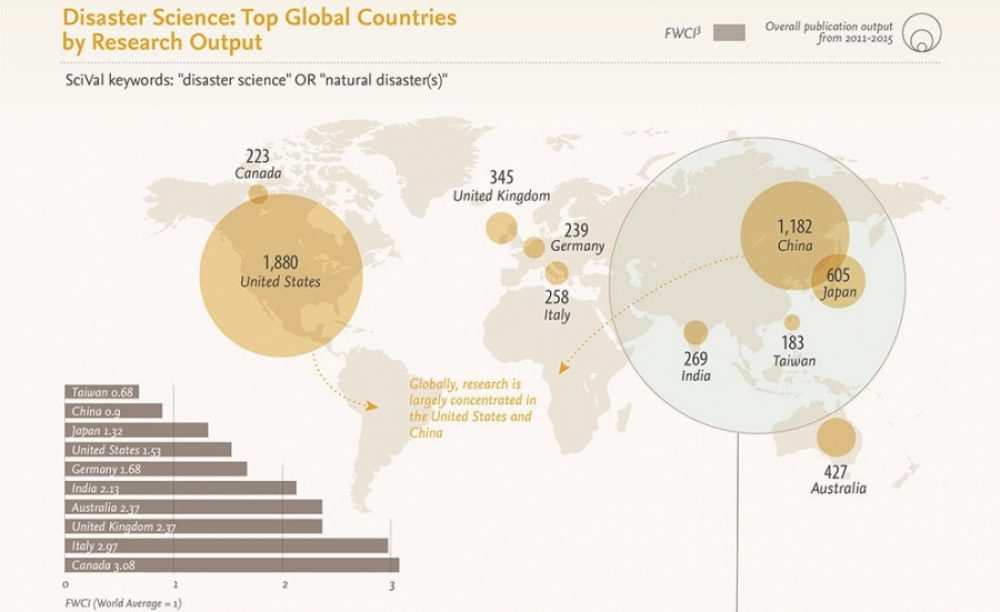A snapshot of global research in support of the 2016 Asian Ministerial Conference on Disaster Risk Reduction
By Taylor Stang
From heat waves to droughts and record rainfall to flooding, natural disasters affect every part of our planet. In 2015, three major international agreements addressing these threats were adopted: the UN Sustainable Development Goals (SDGs), the Paris Agreement, adopted at the Paris Climate Change Conference (COP21), and the Sendai Framework for Disaster Risk and Reduction (SFDRR). Along with these agreements, research into disaster science not only advances our understanding of these often catastrophic events, it can illuminate paths towards better preparedness, recovery and even prevention.
This week, the 2016 Asian Ministerial Conference on Disaster Risk Reduction (@amcdrr2016) is underway in New Delhi, India. In support of the conference, we developed a snapshot of global research on disaster science. With Scopus data from 2011-15, we used SciVal to examine levels of scholarly output, research impact, trending topics and more both globally and within Asia (as defined by the UN Statistics Division), home to 60 percent of the world’s global population (4.4 billion) and many of the most active institutions investigating disaster science.
The infographic was developed by Elsevier’s Research Intelligence team in consultation with Prof. Takako Izumi of Tohoku University’s International Research Institute of Disaster Science (IRIDeS). It also available on Elsevier’s Research Intelligence website.
We invite you to check back later this month for an in-depth article on research into disaster science, a summary of the 2016 Asian Ministerial Conference on Disaster Risk Reduction, and an interview with Dr. Izumi.
Click here to download the Infographic
– Elsevier Connect
https://www.elsevier.com/connect/infographic-the-science-of-disaster-science

